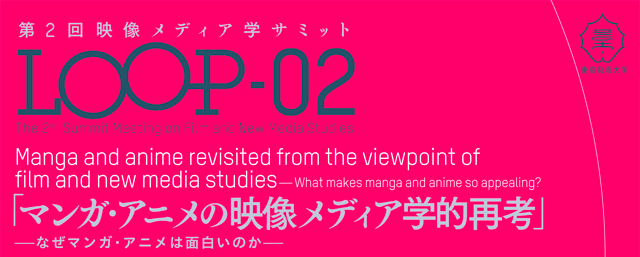While engaging in creative work in the fields of cinema and animation together with students, the Graduate School of Film and New Media, Tokyo University of the Arts, has been exploring possible future directions in image culture and related media. The "LOOP" summit meeting on film and new media studies has been held since 2010 with the aim to revisit the diverse experimental and practical creative work in response to changes in media environments caused by the rapid advancement of innovative technologies in the 20th century.
For this second installment, we invited active creators and researchers from the fields of manga and animation to examine within the greater context of "postwar" Japan how manga and animation have changed in accordance with the transforming social and media environments. Focusing on the images of shoujo (girls) as well as" robots, cyborgs and androids," their interpretations will be informed by the viewpoints of the 2010s.
-
The 2nd Summit Meeting on Film and New Media Studies
- Time and Date:
- 14:00 - 18:00(GMT+9), Sat. November 12th
- Venue:
- Lecture Room 1(Dai-ichi kogishitsu), Main Building,
Faculty of Fine Arts, Ueno Campus, Tokyo University of the Arts - Admission Free (Reservation complete)
- Speakers:
- Part 1 Keiko TAKEMIYA + Eishi KATSURA
Part 2 Mamoru OSHII, KIM Joon Yang + Mitsuko Okamoto - Organizer:
- Graduate School of Film and New Media, Tokyo University of the Arts
- Ustream:
- http://www.ustream.tv/channel/loop-002-en/ (English)
"Manga and anime revisited from the viewpoint of
film and new media studies What makes manga and anime so appealing?"
The Concept behind LOOP-02
Japanese manga and anime are known around the world as forms of Japanese pop culture.
Considering the prominence of the moe and kawaii-kei types of dyed-in-the-wool manga fans, and the boiling "comiket" (comic market), it has been mainly the receiving side that has been at the center of attention in the past.
We believe that now is the time for the "creating side" in Japan to re-examine such works, and re-evaluate their meaning and significance from a historical point of view.
In the realm of manga, the shoujo image continues to function as a role model that has been fatally burdened with increasing elaborateness, in tandem with such print media as magazines, since before the war. Today, "yaoi" and "boys love (BL)" style publications centering around male-on-male romance are popular especially among females with the ability to express their thoughts freely and genuinely.
Meanwhile in anime, the uniquely Japanese idea of the "relationship between man and machine" has been illustrated through "robots", "cyborgs" and "androids", which display at once a certain perspective for the future of the human community at large.
By focusing (purposefully) on manga and anime at the same time, with "postwar" as an additional key idea, the upcoming "LOOP-02" will focus on the process of cultural creation, and the media environments in which shounen/shoujo manga (boys'/girls' comics), cinema/TV animation, and other forms of manga and anime have been placed.
An additional idea behind this event is that the discussion and comparison of manga and anime on the same stage will naturally highlight the differences between both disciplines in such aspects as characters, storytelling and social connections.
"Keiko Takemiya – Imagination in shoujo manga (girls' comics)"
Theme session
"Keiko Takemiya – Imagination in shoujo manga (girls' comics)"
Following the period of high economic growth, Japanese women have set out self-confidently to pursue their own ideals. The genre known as shoujo manga can be regarded as a factor that, reflecting this burst of energy graphically, affirmed the new trend.
Here we will have the opportunity to hear directly from one creator of shoujo manga how and in what kinds of media the trend unfurled while embracing next to the “yaoi” and “boys love” genres also collaborations with the reams of science fiction, fantasy, mystery, love comedy, period pieces, psycho thrillers, and sometimes even serious literature and novels.
Panelists: Mamoru Oshii, Kim Joon Yang; Moderator: Mitsuko Okamoto」
Theme session "Animation and postwar Japanese society – Robots, cyborgs, androids, humans"
Panelists: Mamoru Oshii, Kim Joon Yang; Moderator: Mitsuko Okamoto
Anime films are creations that stem from imagination alone. While telling fictional stories, they communicate animation directors' takes on Japanese society, and highlight their ideas of the world of tomorrow. Reversely, one can say that the social criticism, wake-up calls to the future, and fantastic places and people they portray reflect the state of Japanese society at the respective time of their creation.
Part 2 of LOOP02 focuses on "robots", "cyborgs" and "androids" appearing in animated films, with the aim to examine how these characters have been connecting the realm of animation with mankind, and with postwar Japanese society in particular.
Profile:
[Part 1]

Keiko TAKEMIYA
Manga artist. While still in high school, she was nominated for a honorable mention at Shueisha's "Margaret" award for new artist at the age of 17. Had her first regular column as a university student. Her most well-known works include “To Terra...", "The Poem of Wind and Trees", "Fly me to the Moon!", "Izaron saga" and "Blood of Pegasus". Member of the "Year 24 Flower Group" that revolutionized the shoujo manga (girls' comic) genre in the 1970s. In 1980, “To Terra…" and “The Poem of Wind and Trees” received the 25th Shogakukan Manga Award. In the same year, "To Terra…" was made into a feature-length animated film, and came into the spotlight once again as a TV animation thirty years later, in April 2007. Takemiya has been holding solo exhibitions in Kyoto and Tokyo almost regularly twice a year since 2000, and is presently heading the manga department of Kyoto Seika University.
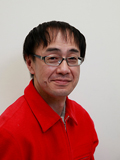
Eishi Katsura
Researching and working across different fields including media, communication and society, Katsura has researched and redefined conventional media environments, mainly public institution including library, art museum and related complex systems from an aspect of his own unique perspective. He has held his current academic position since April 2006.
Since early1990s, he has been writing books and articles on the media studies, communication and other related subjects. His writings have also been published in books including “Interactive Mind—from Modern Library to Computer Network” (in Japanese, 2004, published by NTT Publishing), “Mythology of Tokyo Disneyland” (in Japanese, 1999, published by Seikyusha Co.) and research articles.
[Part 2]
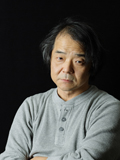
Mamoru Oshii
Mamoru Oshii is one of the most remarkable personalities in modern Japanese filmmaking. He introduced introspective philosophical speculation into the world of animation, influencing at the same time movie creators all around the globe with his visionary style. Oshii joined the animation industry in 1977. His main works are Urusei Yatsura 2: Beautiful Dreamer (1984) the epoch-making Ghost in the Shell (1995) and Innocence (2004, nominated for the Palme d'Or at the Festival de Cannes). Oshii has also directed a number of live-action features, including Avalon (2001). The Sky Crawlers, was nominated for the Golden Lion at the 65th Venice Film Festival, selected in the 33rd Toronto International Film Festival and was greeted with three awards at Sitges 2008. In 2010 he directed Je t'aime, a short film in collaboration with the Japanese super rock group GLAY, that had its world premiere at Annecy 2010.
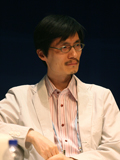
KIM Joon Yang
Critic and scholar in animation. He wrote Animation, Alchemy of Images (2001) and Empire of Images: Animation on the Japanese Islands (2006) – the latter was awarded Poranabi Prize from Japan Foundation in 2008, and translated ONO Kosei’s book Animation Filmmakers in the World (2008). He is an associate editor of Animation: an Interdisciplinary Journal published in the UK, a programmer of the animation category at the Cinema Digital Seoul_Film Festival, a visiting researcher of the Institute for Japanese Studies, Seoul National University, and a member of the Japan Society for Animation Studies. He has been teaching at Korean National University of the Arts and Korean Academy of Film Arts, etc. (108 words)
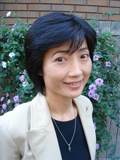
Mitsuko Okamoto
Producer. Okamoto entered NHK in 1987. She produced and planned programs, data broadcasting, and contents for NHK's internet and mobile site. As an executive producer, she launched the program in NHK, "Digital Stadium" (on aired on NHK BS-2), which contributed for nurturing of young talented art creators.In 2008, she moved to Department of Animation, Graduate School of Film and New Media, Tokyo University of the Arts as a professor, and involved in the research of 'planning and producing'. She also launched the NHK educational programs,"2355" "0655" with her colleague, Masahiko Sato, in 2010, which is now broadcasting from Monday to Thursday of every week. Professor of Department of Animation, Graduate School of Film and New Media, Tokyo University of the Arts.
Inquiry: Graduate School of Film and New Media, Tokyo University of the Arts )TEL: +81-(0)50-5525-2673/FAX: +81-(0)45-6560-6202
E-mail: loop [at] gsfnm.jp
[↑UP]
